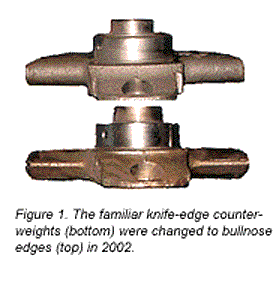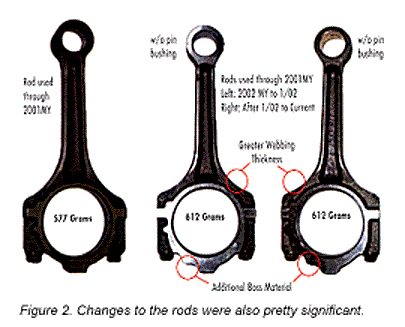Have you ever had a tune get stuck in your head and it seems to follow you everywhere? No matter what you do, or where you go, it continues to go around in your head over and over again. For me, that is what it feels like with this month’s subject, the 4.6L SOHC Ford Romeo engine production crankshafts.
Althought you may have thought that we exhausted this subject in Core Corner in February 2003, Engine Builder, not so. Just when you think you’ve figured out the proliferation of most of the components, you look over your shoulder at that one solid foundation that you have been able to hold to, and then it happens, the bully (from grade school) pulls out the chair just as you are going to sit down and you end up on the floor on your butt with everyone laughing at you.

As we wipe the dust off our jeans, we take another look at what the Ford Romeo engine plant changed on the crankshaft and connecting rods in 2002. You’d think that most of us would know about this already, but during a recent Romeo engine plant tour I ran across this information for the first time. I thought there may be a few others who may need help getting up off the floor as I did.
In 2002, the crankshaft went through a transition of both balance and appearance. Balance because the connecting rods changed and are 35 grams heavier. Appearance differences are the counterweights’ leading edges that are noticeably different from the familiar knife-edge that we have seen. Now those counterweight leading edges are cast as bullnose edges (see Figure 1, above).
The previous feature that clearly defined the 5.4L crankshaft from the 4.6L is no longer, since they now both have the bullnose counterweight. The new crankshaft carries a casting number of 2C5E-AC.
This time also saw revisions to the connecting rods. The initial introduction of the heavier connecting rod remained a press fit wrist pin through January 2002. After that the connecting rod changed once more by adding a pin bushing and a full floating pin, once again just as the 5.4L engine.
You will notice in Figure 2 that both the connecting rods (bushed and non) have identifying features that stand out making identification not too difficult. One difference is the appearance of the beam, instead of the clean flat lines of the original; there is a more rounded and softer edge to the heavier connecting rod.

Another difference is an additional rise of material on the cap of the connecting rod. Also at the upper housing bore area, as it makes a transition into the beam, the connecting rod is thicker. Of course the one with the bushing is a dead give away as long as you don’t have any 5.4L connecting rods lying around in the mix.
As complete assemblies these components may interchange, however intermixing these components will result in an unacceptable NVH (Noise Vibration Harshness) situation; one that would obviously end up in a “Do Over!”
It seems that we have been beating on the crankshaft drum pretty hard lately but, since it is the heart of the engine, how far are you going to get on a bum heart?
PERA, the Production Engine Remanufacturers Association, offers a variety of technical and business resources to its members and the industry. For more information or to order your copy of the 2004 PERA Engine Application and Identification Catalog, visit www.pera.org. For technical questions, contact the Production Engine Remanufacturers Association at: [email protected].













